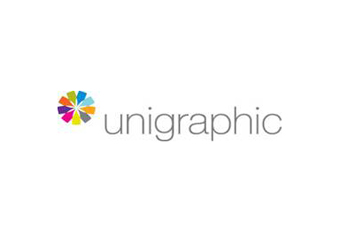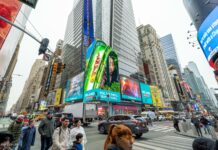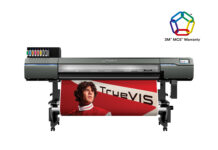 Unigraphic, Inc. of Woburn, Massachusetts was seeing more demand for large format graphic point of purchase (POP) displays and found themselves at a crossroads. According to Bob Quinlan, president of Unigraphic, “We were pushing the limits of our existing large format equipment. We were handling the increasing workload, but just barely. It was beginning to cost us money in terms of limited capacity and low margins due to our cost structure. It was time to move forward, to make the right investment that would get us to that next level.”
Unigraphic, Inc. of Woburn, Massachusetts was seeing more demand for large format graphic point of purchase (POP) displays and found themselves at a crossroads. According to Bob Quinlan, president of Unigraphic, “We were pushing the limits of our existing large format equipment. We were handling the increasing workload, but just barely. It was beginning to cost us money in terms of limited capacity and low margins due to our cost structure. It was time to move forward, to make the right investment that would get us to that next level.”
Known for their high quality and excellent customer service, Unigraphic has been in the printing business for over 47 years providing commercial print services, digital printing, and mailing services to an extensive client base of local, regional and national brands and retailers. Their large format business was largely in billboards and banners, but recently their customers were asking more and more for point of purchase display graphics.
“We’ve had a steady business with many large retailers who are headquartered in New England, doing a lot of offset work, and some large format work. Then we started to see a lot more demand for high quality display graphics and POP,” said Brian Hegan, sales manager at Unigraphic. “Our existing equipment just couldn’t keep up with the increased demand.”
Hegan gave an example of a POP job for a popular retail fashion chain that required 24” x 36” and 22” x 28” posters. “That job would take 40 hours of press time and would tie up the shop for a week or more, which meant turning away other jobs.”
“We all agreed that point of purchase was the future for Unigraphic,” Bob Quinlan said, “the new jobs our customers were asking us for were POP. We were missing out on jobs because we couldn’t handle the work load or be competitive, that’s when we decided we were going to make investments in large format equipment to improve our capabilities and aggressively go after the POP business.”
Quinlan and his two brothers, Chief Operations Manager Mike and Executive Vice President Jack, started looking for a solution. “We looked at everything out there,” Bob Quinlan said, “and the Inca Onset S40 from Fujifilm just blew everyone else away.”
The Inca Onset S40 with automation will produce 94 full-sized (63” x 123.6”), high-quality prints per hour, or 292 – 40” x 60” sheets per hour. “With the S40, those jobs that used to take a week, will take only hours to produce, and cost half as much,” Hegan said. “The Inca S40 not only gives us the capacity, it will enable us to turn jobs faster and be more competitively priced.”
Hegan also plans to expand the work Unigraphic is doing for its existing customer base. “We have one large retail client that we do all of their offset print work, but we’re not getting the large format and POP. With the S40’s print quality and speed, that’s an ideal account for us now. We can handle all of their needs.”
Hegan also expects to win new business. “We’re accepting RFP’s now that we had to pass on before, and we’re able to take on more work from new accounts,” he said. “Print buyers who we couldn’t help before are now asking us to provide proposals. The word is getting out about our new capabilities with the S40, and we expect we will win a lot of new business.”
Unigraphic is planning an open house to showcase their new capabilities. “A lot of printers don’t like customers in the plant, but we love it,” Hegan said. “Our plant shows very well and we’re proud of it. Buyers who come in to see what we do and how we do it often give us opportunities to quote new business.”
“This is a game changer for Unigraphic,” Bob Quinlan said. “Not many other shops will have the equipment we have in one building or the capabilities—we now have the advantage over other print providers and expect to capitalize on the opportunity.”











